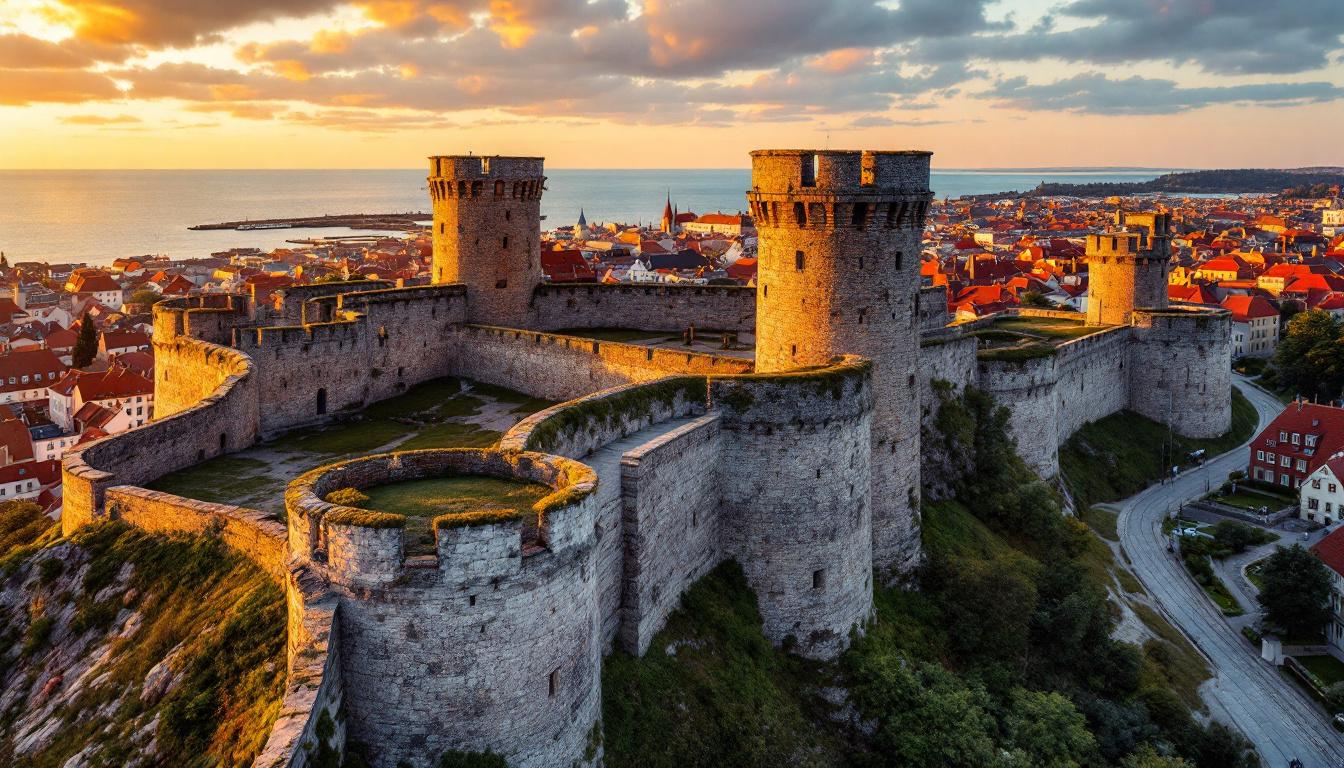Standing before Visby’s 800-year-old ring walls, I realized I was witnessing something that exists nowhere else in the Baltic. This isn’t just another medieval town – it’s the only complete Hanseatic fortress that UNESCO protects with absolute dedication.
While Bergen’s Bryggen offers wooden merchant houses and Tallinn displays partial walls, Gotland holds the singular treasure of 3.6 kilometers of unbroken medieval fortification. Twenty-seven towers still guard secrets that local Gotlanders have protected for centuries.
What makes this Swedish island truly exclusive isn’t just its walls – it’s the living medieval city they still protect, where over 200 original buildings create an authentic time capsule that no other Baltic destination can match.
The medieval fortress that survived when others fell
Why Visby’s walls remained intact
Strategic isolation saved Gotland’s fortifications when mainland Hanseatic cities lost theirs to wars and urban expansion. Unlike Lübeck’s destroyed defenses or Bergen’s absent walls, Visby’s 13th-century ring remained untouched on this Baltic island sanctuary.
The engineering marvel locals call Stadsmuren
Walking the 3.4 kilometers of preserved wall, you’ll discover limestone blocks quarried from this very island, creating fortifications that blend seamlessly with Gotland’s natural bedrock. These aren’t reconstructed tourist attractions – they’re authentic medieval engineering that has withstood 800 Baltic winters.
UNESCO’s unprecedented protection of Hanseatic heritage
The conservation rules that preserve authenticity
Statutory regulations from 2010 prohibit any alterations that disrupt Visby’s medieval integrity. Even church ruins like St. Karin require impact assessments before hosting events, ensuring every stone tells its original story without modern interference.
What UNESCO guards that other sites can’t offer
Beyond structural preservation, UNESCO protects Visby’s complete medieval skyline – something Bergen’s modern harbor views and Tallinn’s Soviet-era additions cannot claim. This creates the world’s most authentic Hanseatic trading post experience.
The exclusive medieval experience locals quietly protect
Why 450,000 visitors feel like a small number here
Gotland’s 3,140 square kilometers absorb crowds that would overwhelm compact medieval quarters elsewhere. While Bergen’s Bryggen suffers from cruise ship bottlenecks, Visby’s extensive preserved area lets you explore cobblestone streets in relative solitude.
The boat bus system that keeps authenticity intact
Local Gotlanders developed sustainable transport networks that reduce car traffic within the ring walls. This isn’t just environmental consciousness – it’s cultural protection that maintains medieval acoustics and stone preservation impossible in vehicle-heavy heritage sites.
The July advantage that transforms your medieval encounter
Why summer timing unlocks exclusive experiences
Almedalsvecken political gatherings in early July create unique cultural layers where Sweden’s modern democracy meets medieval architecture. This annual convergence offers insights into how living heritage adapts without compromising authenticity – something static museum cities cannot provide.
The photography opportunities that capture medieval magic
July’s extended daylight until 11 PM creates golden hour photography conditions impossible further south. Dawn light streaming through the ring wall towers offers shots of limestone textures and medieval shadows that professional photographers travel specifically to capture on this unique island.
Gotland stands alone as the Baltic’s only complete medieval fortress city, where UNESCO’s protective embrace ensures authenticity that crowded European alternatives cannot match. The ring walls that local Gotlanders simply call Stadsmuren represent more than medieval engineering – they’re guardians of the world’s most preserved Hanseatic experience.
This July, while Mediterranean crowds surge and Scandinavian capitals swelter, Visby’s 800-year-old stones offer cooling maritime breezes and genuine medieval encounters. Book that Stockholm ferry connection – some historical treasures exist nowhere else on Earth.
Essential planning for your exclusive medieval experience
How do I reach Gotland’s medieval walls from Stockholm?
Destination Gotland ferries run multiple daily services from Stockholm to Visby, taking approximately 3.5 hours. Advanced booking recommended for July peak season travel.
What makes Visby’s walls more special than Tallinn’s old town?
Visby preserves a complete 3.6-kilometer ring wall circuit with 27 towers, while Tallinn’s walls cover only 1.5 kilometers with asymmetrical sections missing.
Can I walk the entire medieval wall system?
Yes, the preserved 3.4-kilometer section allows complete circumnavigation, offering tower access points and medieval gate passages throughout your journey.
Is July too crowded for authentic medieval exploration?
Gotland’s large area and sustainable visitor management ensure authentic experiences even during 450,000+ annual visitor peaks, unlike compact European medieval sites.
What medieval buildings exist beyond the famous ring walls?
Over 200 original medieval structures include merchant houses, church ruins, and the complete 13th-century street grid – more preserved Hanseatic architecture than any Baltic competitor.
